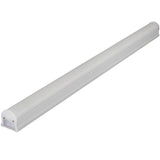Hidden Money in Energy Efficiency Incentives for Lighting and Other Products
Posted by George on for ProLampSales

Municipalities, utility companies, and other establishments offer a variety of rebate and savings programs to encourage individuals and businesses to replace old, inefficient lighting with new, energy saving products. Principally, these incentives are offered to support energy efficiency and the use of renewable energy sources to lessen pollution, overall energy usage, and waste.
Such initiatives are offered at the national, regional, state, and local level. As a consumer, you are potentially missing out on "hidden money" by not further exploring these savings opportunities!
National
At the national level there is the Residential Renewable Energy Tax Credit, Energy Star, the U.S. Energy Information Administration (EIA), and the Association of Energy Services Professionals (AESP).
Established by the Energy Policy Act of 2005, the Residential Renewable Energy Tax Credit allows an individual taxpayer to claim a credit of 30% of qualified expenditures for their own house. This originally only applied to solar-electric systems, solar water heating systems, and fuel cells but was later extended in 2008 to include small wind-energy systems and geothermal heat pumps.
Regional
There are also more savings opportunities at the regional level, such as the Northwest Energy Efficiency Alliance (NEEA), which is a coalition of more than 140 Northwest energy efficiency organizations in the states of Oregon, Washington, Idaho, and Montana. For America’s heartland, there is the Midwest Energy Efficiency Alliance (MEEA), which is an association of governments, utilities, and other energy efficiency establishments including all thirteen Midwest states. The Southwest Energy Efficiency Project (SWEEP) is a similar grouping that includes Arizona, Colorado, Nevada, New Mexico, Utah, and Wyoming.
State
At the state level, there are many more rebate and saving programs available. The Database of State Incentives for Renewables and Efficiency (DSIRE) is the best resource for this and allows you to search in a number of different ways and apply filters.
For instance, a person living in the state of Illinois may qualify for a grant from the Illinois Clean Energy Community Foundation. With this grant, the incentive amount varies but is focused on the use of energy-efficient lighting products and the corresponding controls and sensors on a comprehensive level.
Local
Savings opportunities can even be found down at local level in your own city or town. The Energy Star Rebate Finder is a great resource to find offers that are available in your city or town by allowing you to search by zip code and apply filters.
For example, someone living in the city of Chicago, Illinois may also qualify for a mail-in rebate specifically for LED bulbs through the Illinois Department of Commerce and Economic Opportunity. This incentive applies for retrofitting 20-100 Watt incandescent lamps with LED integral lamps (screw-in base or pin-type).
We encourage lighting customers, both residential and commercial, to check with their local electric utility company for energy-saving incentives and rebate programs.
Hidden Money for Them As Well
The entities that provide the incentives also receive the potential benefit of avoiding costly redesign and/or reconstruction of current operations due to projected energy consumption increases.
Essentially, it is cheaper to offer the rebates and savings programs than to build a new power plant to meet bigger energy demands. Furthermore, the rebate providers receive free positive publicity and it helps the company develop a socially responsible corporate image.
- Posted in Energy Efficiency, Retrofits
Featured Products (View All)
0 Comments




